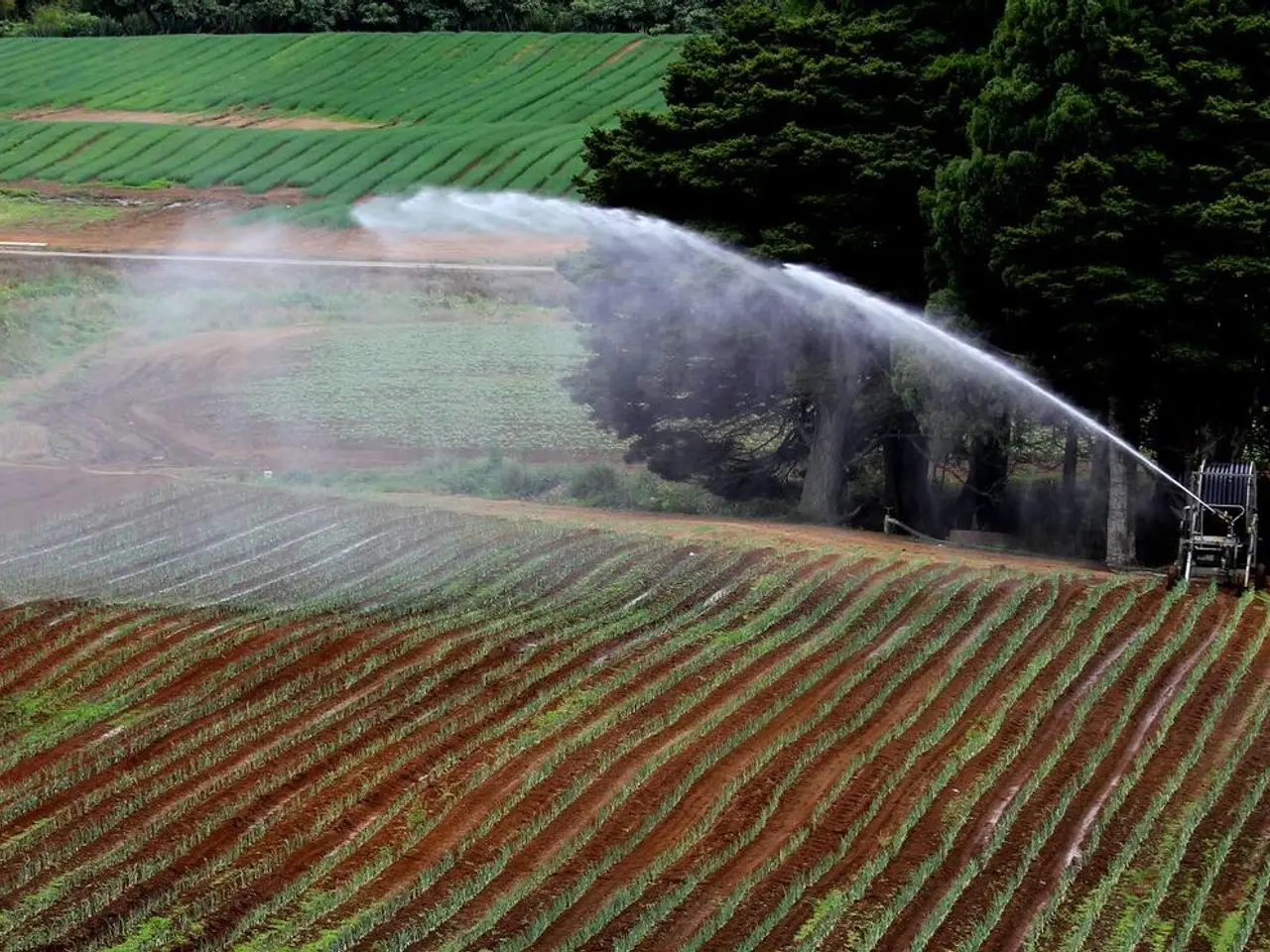Zinc Sulphate Market Forecasted for a 6.4% Annual Growth Rate Up Until 2034
The global zinc sulphate market is poised for significant growth over the next decade, with projections indicating a near doubling of its value from USD 1.7 billion in 2024 to USD 3.2 billion by 2034. This growth is anticipated at a compound annual growth rate (CAGR) of 6.4% during the period 2025-2034 [1][2].
In 2024, the Asia Pacific (APAC) region dominated the market, accounting for approximately 47.3% of the global share and generating USD 0.8 billion in revenue. This regional dominance is expected to continue, driven primarily by the increasing demand for zinc-based fertilizers in agriculture to address soil nutrient deficiencies, thereby enhancing crop yields [1][2].
The agricultural sector, a major consumer of zinc sulphate, is projected to reach USD 24 billion by 2025, further fueling the demand for zinc sulphate. The Micronutrient segment led the global zinc sulphate market in 2024, holding a 41.2% share by application. Monohydrate Zinc Sulphate commanded a leading 47.8% share of the global zinc sulphate market in the same year [1][2].
India, with a per capita zinc consumption of 0.5 kg (significantly lower than the global average of 1.9 kg and China's 5.0 kg), presents a significant market growth potential. The country's zinc industry is witnessing robust growth due to the expanding demand across multiple sectors [1][2].
Key players in the zinc sulphate market include Hindustan Zinc Limited, which operates advanced smelters using technologies like Roast Leach Electro-winning (RLE) and Ausmelt. The Chanderiya Lead-Zinc Smelter, for instance, has an annual zinc production capacity of 525,000 tonnes [1].
Zinc sulphate concentrates (ZSC) are critical across industries such as agriculture, pharmaceuticals, water treatment, and chemical manufacturing. Technological advances and environmental considerations are fostering more efficient and sustainable production methods for zinc sulphate [1][2].
Sources: [1] Market Reports World: "Zinc Sulphate Market - Global Industry Analysis, Size, Share, Growth, Trends, and Forecast, 2025-2034" [2] Grand View Research: "Zinc Sulphate Market Size, Share & Trends Analysis Report By Application, By Region And Segment Forecasts, 2021 - 2028"
In the forecasted period, the increasing demand for zinc-based fertilizers in agriculture could encourage substantial growth in the financial aspect of the zinc sulphate market, broadening the scope for the industry's expansion. As industries like pharmaceuticals, water treatment, and chemical manufacturing require zinc sulphate concentrates, technological advancements and environmental concerns may drive financial gains in the industry through the development of more efficient and sustainable production methods.




